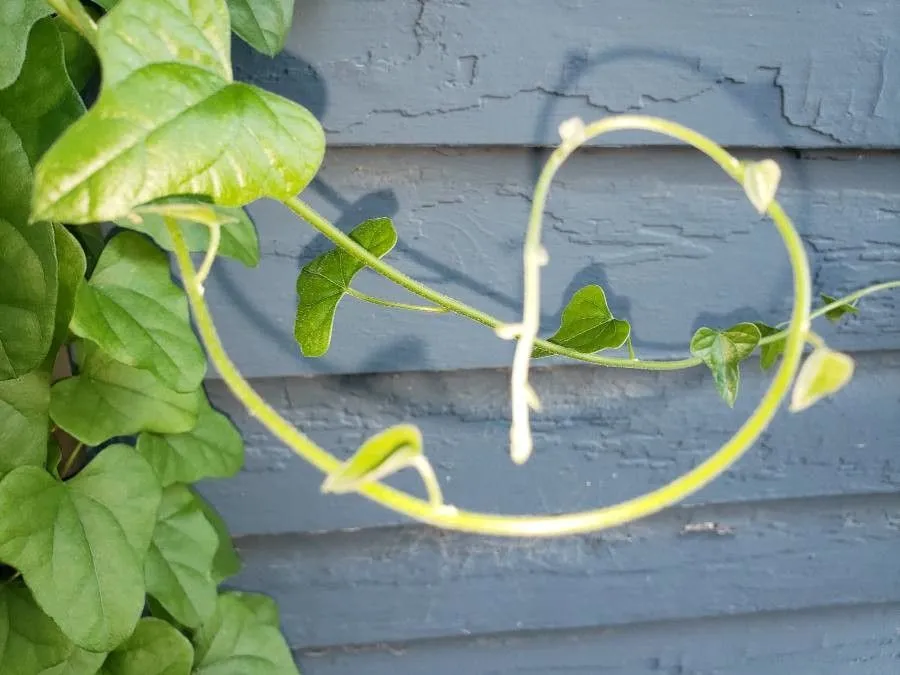
Author: (L.) DC.
Bibliography: Syst. Nat. 1: 524 (1817)
Year: 1817
Status: accepted
Rank: species
Genus: Cocculus
Vegetable: Unknown
Observations: Kansas to S. Indiana and NE. Mexico
Carolina moonseed is a notable species of climbing plant renowned for its unique characteristics and diverse range of habitats. Known scientifically as Cocculus carolinus, it was first formally described and classified in the seminal botanical work “Systema Naturae” in 1817.
This intriguing plant belongs to the Menispermaceae family, a lineage of flowering plants distinguished by their often-twining growth habits and significant medicinal properties. The author of its classification, denoted by the abbreviation “(L.) DC.”, signifies the contributions of two eminent botanists, Carl Linnaeus and the later revisor, Augustin Pyramus de Candolle, who refined its scientific description.
Cocculus carolinus flourishes in a range of geographical regions that stretch across Kansas to Southern Indiana in the United States and extend into Northeastern Mexico. This broad distribution underscores its adaptability to various climatic conditions and terrains.
One of the most striking features of Carolina moonseed is its distinct foliage and fruit. The plant’s leaves are typically broad and heart-shaped, contributing to its ornamental appeal in natural settings. In addition, its fruit, often small and red, are noteworthy for their resemblance to tiny moons, a characteristic that likely inspired its common name. However, these fruits – like many in the Menispermaceae family – are generally considered toxic and should be handled with care.
Carolina moonseed is valued not only for its aesthetic features but also for its role in the ecosystem. It provides shelter and food for a variety of wildlife, while its vining nature makes it useful for erosion control and habitat restoration projects. Despite its utility, caution is advised due to its toxic properties, which necessitate mindful planting and management in areas frequented by humans and pets.
In summary, Carolina moonseed (Cocculus carolinus) is a remarkable climbing plant, appreciated for its ornamental qualities and ecological benefits, yet it requires careful handling due to its toxic fruit. Originating from a prominent botanical heritage, its presence from Kansas to Northeastern Mexico showcases the plant’s resilience and versatility in various environments.
Eng: carolina coralbead, carolina moonseed, carolina snailseed, coralbead, coralberry, redberry moonseed
En: Carolina moonseed, Carolina snailseed, Coralbead, Coralberry, Carolina coralbead, Redberry moonseed
Ar: عنيبية كارولينية
Taken Aug 28, 2006 by EOL − Steven J. Baskauf (cc-by-nc-sa)
Taken Aug 28, 2006 by EOL − Steven J. Baskauf (cc-by-nc-sa)
Taken Nov 10, 2021 by JON H (cc-by-sa)
Taken Sep 12, 2014 by EOL − Linda Jo Conn (cc-by-nc)
Taken Feb 13, 2022 by Deepana Deepana Gangadharan (cc-by-sa)
© copyright of the Board of Trustees of the Royal Botanic Gardens, Kew.
Taken Oct 16, 2021 by booth holly (cc-by-sa)
Taken Oct 9, 2022 by Lee Loewenstein (cc-by-sa)
Taken Nov 14, 2021 by Stef G (cc-by-sa)
Taken Oct 16, 2022 by Rachel Chenot (cc-by-sa)
Taken Aug 31, 2022 by Leila Chreiteh (cc-by-sa)
Taken Dec 18, 2021 by Taylor Shook (cc-by-sa)
Taken Dec 12, 2020 by stathis stathis (cc-by-sa)
Taken Apr 23, 2021 by Alexandra Ambler (cc-by-sa)
Taken Jun 17, 2021 by leslie norman (cc-by-sa)
Taken Jun 17, 2021 by leslie norman (cc-by-sa)
Taken Oct 10, 2015 by EOL − Sam Kieschnick (cc-by-nc)
Taken Oct 7, 2015 by EOL − Michael D Fox (cc-by)
Taken Jun 12, 2003 by EOL − Steven J. Baskauf (cc-by-nc-sa)
Taken Jul 10, 2004 by EOL − Steven J. Baskauf (cc-by-nc-sa)
Taken Oct 13, 2003 by EOL − Steven J. Baskauf (cc-by-nc-sa)
Taken Mar 22, 2016 by EOL − Erin Taylor (cc-by-nc)
Taken Jun 13, 2003 by EOL − Steven J. Baskauf (cc-by-nc-sa)
Taken Oct 11, 2004 by EOL − Steven J. Baskauf (cc-by-nc-sa)
Family: Myrtaceae Author: (F.Muell.) K.D.Hill & L.A.S.Johnson Bibliography: Telopea 6: 402 (1995) Year: 1995 Status:…
Family: Rubiaceae Author: Pierre ex A.Froehner Bibliography: Notizbl. Bot. Gart. Berlin-Dahlem 1: 237 (1897) Year:…
Family: Sapindaceae Author: Koidz. Bibliography: J. Coll. Sci. Imp. Univ. Tokyo 32(1): 38 (1911) Year:…
Family: Asteraceae Author: A.Gray Bibliography: Pacif. Railr. Rep.: 107 (1857) Year: 1857 Status: accepted Rank:…
Family: Fabaceae Author: Medik. Bibliography: Vorles. Churpfälz. Phys.-Ökon. Ges. 2: 398 (1787) Year: 1787 Status:…
Family: Aspleniaceae Author: (Cav.) Alston Bibliography: Bull. Misc. Inform. Kew 1932: 309 (1932) Year: 1932…